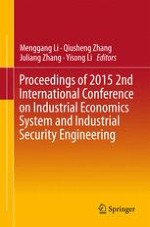2016 | OriginalPaper | Chapter
Enlightenment on India and Japan Grain Safety Policy for China—A Case Study from a Macro Perspective
Authors : Ningshan Xu, Yuduo Lu, Haiteng Wang
Published in: Proceedings of 2015 2nd International Conference on Industrial Economics System and Industrial Security Engineering
Publisher: Springer Singapore
Activate our intelligent search to find suitable subject content or patents.
Select sections of text to find matching patents with Artificial Intelligence. powered by
Select sections of text to find additional relevant content using AI-assisted search. powered by
